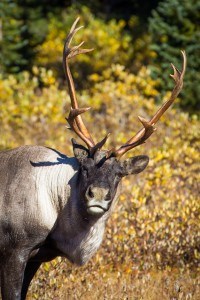
It’s not just Jasper’s caribou that are struggling.
The Canadian Parks and Wilderness Society released its second annual report on the government’s efforts to save boreal woodland caribou Dec.16, and overall the organization has some serious concerns.
According to the report, threats from industrial development have outpaced habitat conservation and restoration across the country, and only six of the 51 plans to protect boreal caribou populations have even started.
CPAWS expressed deep concern at the slow movement on those plans, which are required under the Species at Risk Act.
Jasper’s woodland caribou population totals 41 animals—a number that has dropped dramatically from 128 in 2002. While Jasper’s caribou are the same species as the boreal population, they belong to a different sub-population: the southern mountain population group. This means that many of the concerns and recommendations in CPAW’s report don’t apply specifically to Jasper’s caribou. But that doesn’t mean that we shouldn’t take notice of the report’s results.
Alison Ronson, the executive director of CPAWS’s Northern Alberta Chapter, said caribou populations in national parks belong to “an entirely different management structure,” but noted that Jasper should still pay attention to what’s happening to the boreal population unit.
The major cause of its dwindling population is habitat fragmentation, and although Jasper faces few of the pressures that face the rest of the province in terms of industrial development, significant habitat loss is occurring right outside the park boundaries.
“The closer the impacts get to the boundary of the park, the more that is going to impact the populations within the park.
“The southern mountain populations, and the boreal populations, while they might not migrate very much, there’s still this connectivity between the forests that is necessary to sustain those populations,” she said.
Ronson pointed to the report, which found that 25,000 square kilometres of land in caribou ranges has been leased for oil and gas development in Alberta since 2005. And she noted that caribou are an “umbrella species,” and their health is usually a good indication of the overall health of the ecosystem that supports them.
Ronson said that with caribou habitat becoming more and more scarce in Alberta, what happens in national parks takes on an even greater significance.
She said that, under the Canada National Parks Act, protection of ecological integrity is the No. 1 priority in the parks. That means that if other land in the province is not being managed with conservation in mind, it makes what happens in national parks even more important.
“If the rest of the land isn’t being properly protected, the parks become even more important [for accomplishing] that purpose.
“Again I’ll reiterate that just because there’s a line drawn on the map, doesn’t mean that the park doesn’t experience outside influences,” she said. “What goes on in the boreal habitat is going to affect the mountain populations as well. It’s inevitable.”
Parks Canada representative Shelly Bird said she hadn’t yet reviewed the report, but said that since Jasper’s caribou belong to a different population “it would be more relevant to some of [Parks Canada’s] other parks.”
Trevor Nichols
[email protected]
